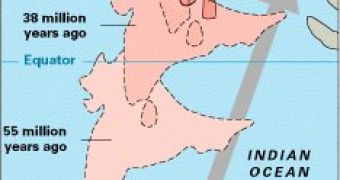This is the roof of the world. The way the highest mountainous chain (Himalaya) and plateau (Tibet) on Earth have formed has always fascinated scientists.
Cornell geologist Larry Brown is lead-researcher of an international seismic profiling team that has been working for more than 15 years in Tibet, using explosions to probe the deep earth and find how continents collided millions of years ago. The project, named INDEPTH (International Deep Profiling of Tibet and the Himalayas) has developed through several stages and is now an international collaboration of researchers from the United States, China, Germany, Canada and Ireland.
The National Science Foundation has renewed funding for the project to be finished with a grant of $1.3 million to Cornell. Brown, earth and atmospheric sciences professor, has been working on the project since the early 1990s.
"Tibet is one of the world's best examples of what happens when continents smash together because of its famously high elevation and sprawling terrain." explained Brown.
The Himalaya chain is believed to have appeared when the Indian continent collided into Asia roughly 50 million years ago.
"The ultimate goal is to piece together what happens when continents collide to form supercontinents like Eurasia." said Brown.
The most accepted theory says that the Tibetan Plateau appeared when India crashed under Asia.
"We'll be testing the hypothesis that, in fact, Asia is also being stuffed under the northern part of the plateau," Brown said.
To prove that, researchers must investigate the geometry of rock layers beneath the Earth's surface by using echo sounding, the same technology used for mapping the ocean bottom and detect oil or gas deposits.
The explosions set up in Tibet provoke sound waves, whose echoes is reflected by the deep rock layers, recorded and analyzed.
"This allows an "acoustic photograph" to be taken as deep as 100 miles (160 km), but typically between 20 and 30 miles (32-50 km) deep," said Brown.
Brown is also involved in the research of deep imaging of major earthquake faults in Taiwan and of the active volcano Montserrat, on the Caribbean.

 14 DAY TRIAL //
14 DAY TRIAL //